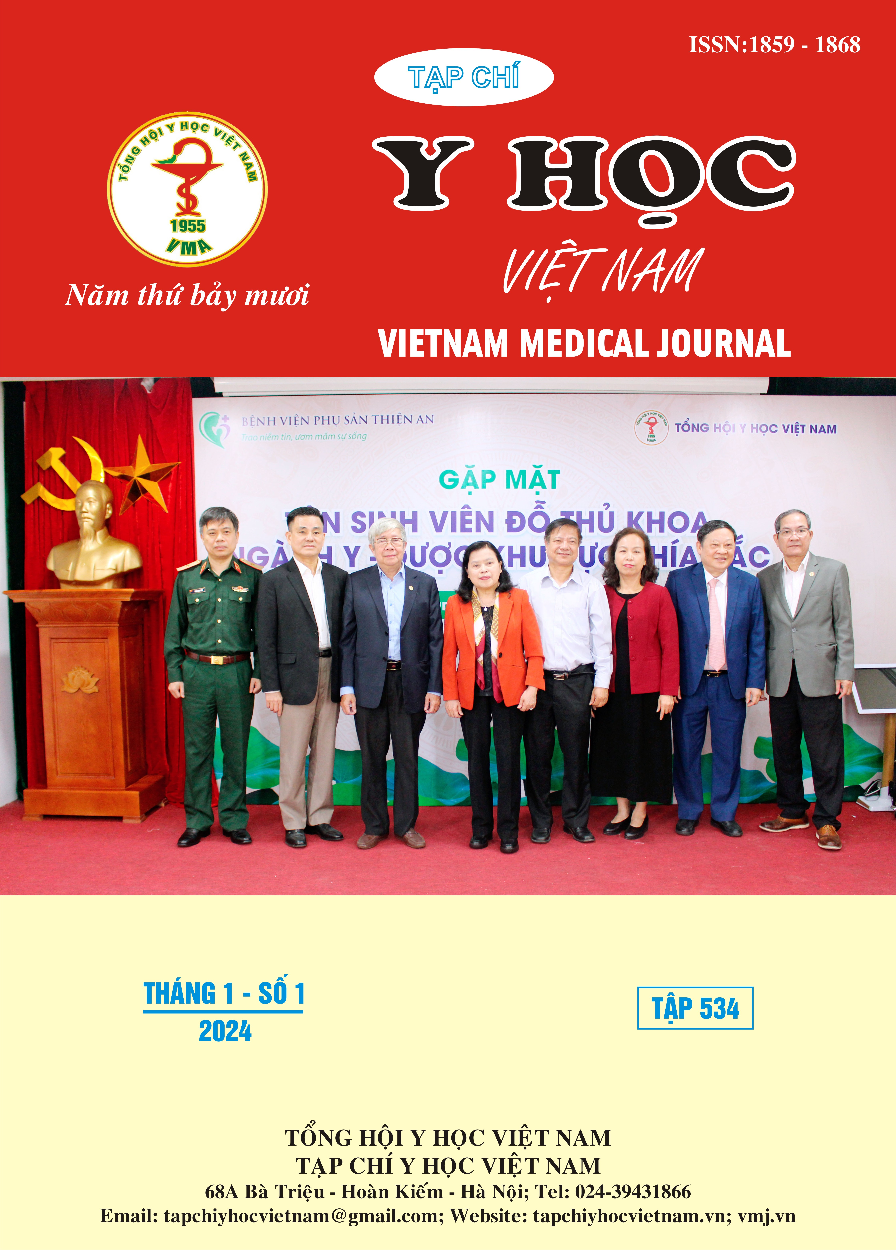EFFICACY OF MANDIBULAR RECONSTRUCTION WITH THE FIBULA FLAP: A SYSTEMATIC REVIEW
Main Article Content
Abstract
Objective: Evaluating the results of microsurgical fibula bone grafting in large defects in the mandible in studies during the period 2013-2023. Subjects and methods: Systematic review of studies found on the electronic databases PubMed-MEDLINE and Cochrane. Assessing the quality of studies using the MINORS tool. The main outcome is the surgical success rate (survival flap rate). Other outcomes include patient satisfaction, chewing ability and speech ability after surgery. Results: A total of 13 studies met the inclusion and exclusion criteria. There were 6 studies with a surgical success rate of 100% and only 2 studies with a rate below 90%. There are 3 studies showing that the rate of patients satisfied with surgical results is good and average 70-97%. The rate of patients recovering pronunciation is 65-85%. The rate of patients recovering the ability to chew normally or eat soft/liquid food was superior to eating through a sonde, in which patients who were able to chew normally were superior in 3 studies with a rate of 78-97%. Conclusions: Microsurgical fibula bone grafting surgery is a highly effective treatment method in restoring large defects in the mandible, improving function, and bringing satisfaction to patients after surgery.
Article Details
References
2. D. Hidalgo, “Fibula free flap: a new method of mandible reconstruction,” Plast. Reconstr. Surg., vol. 84, no. 1, p. 71—79, Jul. 1989.
3. G. H. Lee, S. M. Lee, and J. H. Park, “The role of mandibular stabilization in orthognathic surgery,” Semin. Orthod., vol. 25, no. 3, pp. 188–204, 2019, doi: https://doi.org/ 10.1053/ j.sodo. 2019.08.005.
4. D. Moher, A. Liberati, J. Tetzlaff, D. G. Altman, and T. P. Group, “Preferred Reporting Items for Systematic Reviews and Meta-Analyses: The PRISMA Statement,” PLOS Med., vol. 6, no. 7, pp. 1–6, 2009.
5. A. F. Mericli et al., “Using a Second Free Fibula Osteocutaneous Flap after Repeated Mandibulectomy Is Associated with a Low Complication Rate and Acceptable Functional Outcomes.,” Plast. Reconstr. Surg., vol. 140, no. 2, pp. 381–389, Aug. 2017, doi: 10.1097/ PRS.0000000000003523.
6. J. T. M. van Gemert, J. H. Abbink, R. J. J. van Es, A. J. W. P. Rosenberg, R. Koole, and E. M. Van Cann, “Early and late complications in the reconstructed mandible with free fibula flaps.,” J. Surg. Oncol., vol. 117, no. 4, pp. 773–780, Mar. 2018, doi: 10.1002/jso.24976.
7. N. A. Papadopulos et al., “Mandibular reconstruction with free osteofasciocutaneous fibula flap: a 10 years experience.,” Injury, vol. 39 Suppl 3, pp. S75-82, Sep. 2008, doi: 10.1016/ j.injury.2008.05.017.
8. Y. Shen et al., “Double-barrel vascularised fibula graft in mandibular reconstruction: a 10-year experience with an algorithm.,” J. Plast. Reconstr. Aesthetic Surg. JPRAS, vol. 66, no. 3, pp. 364–371, Mar. 2013, doi: 10.1016/j.bjps.2012.10.005.


